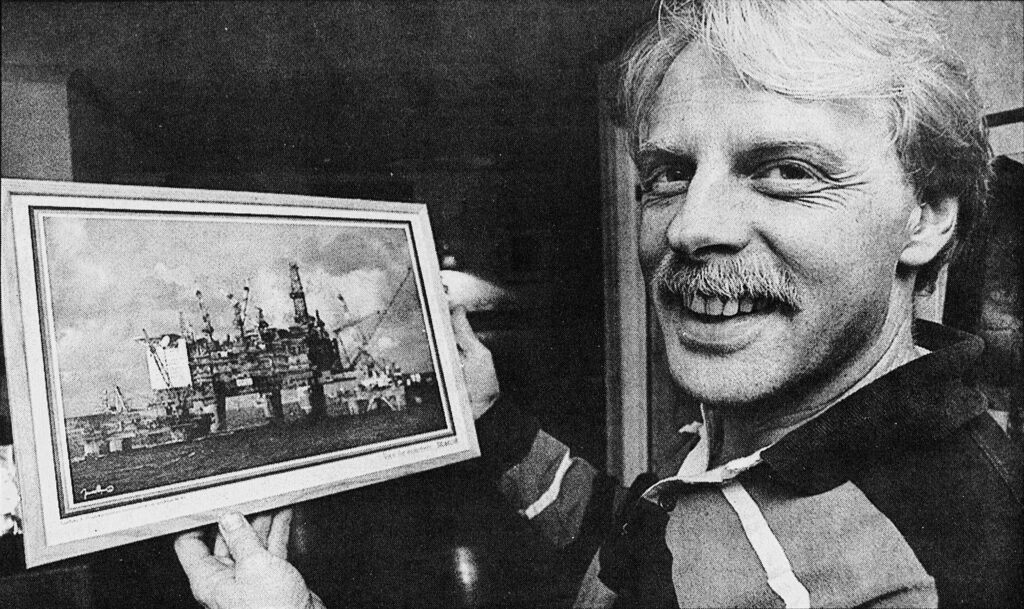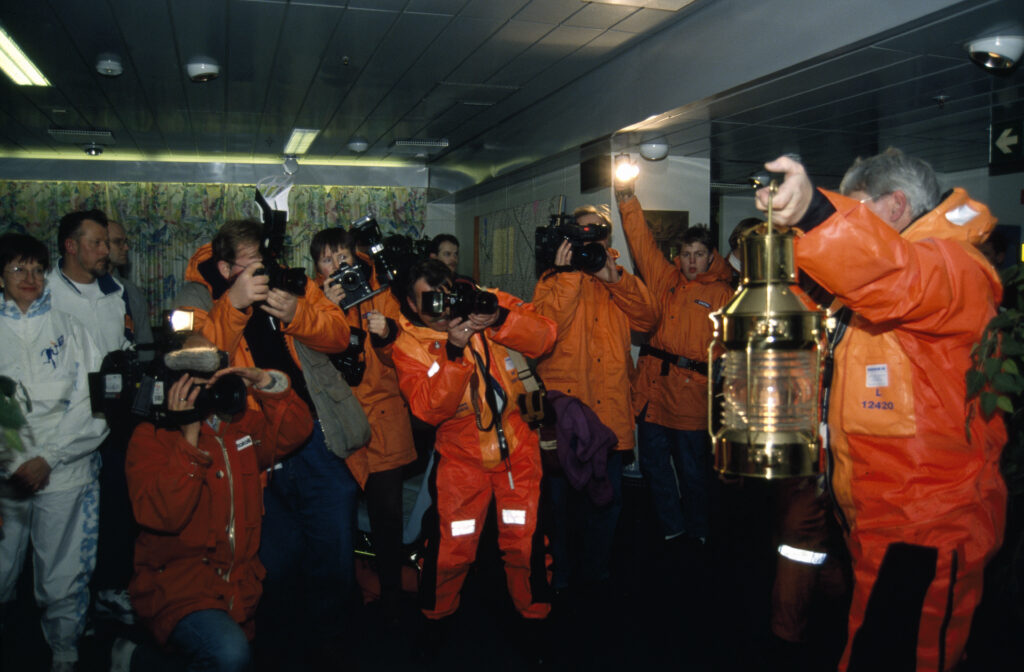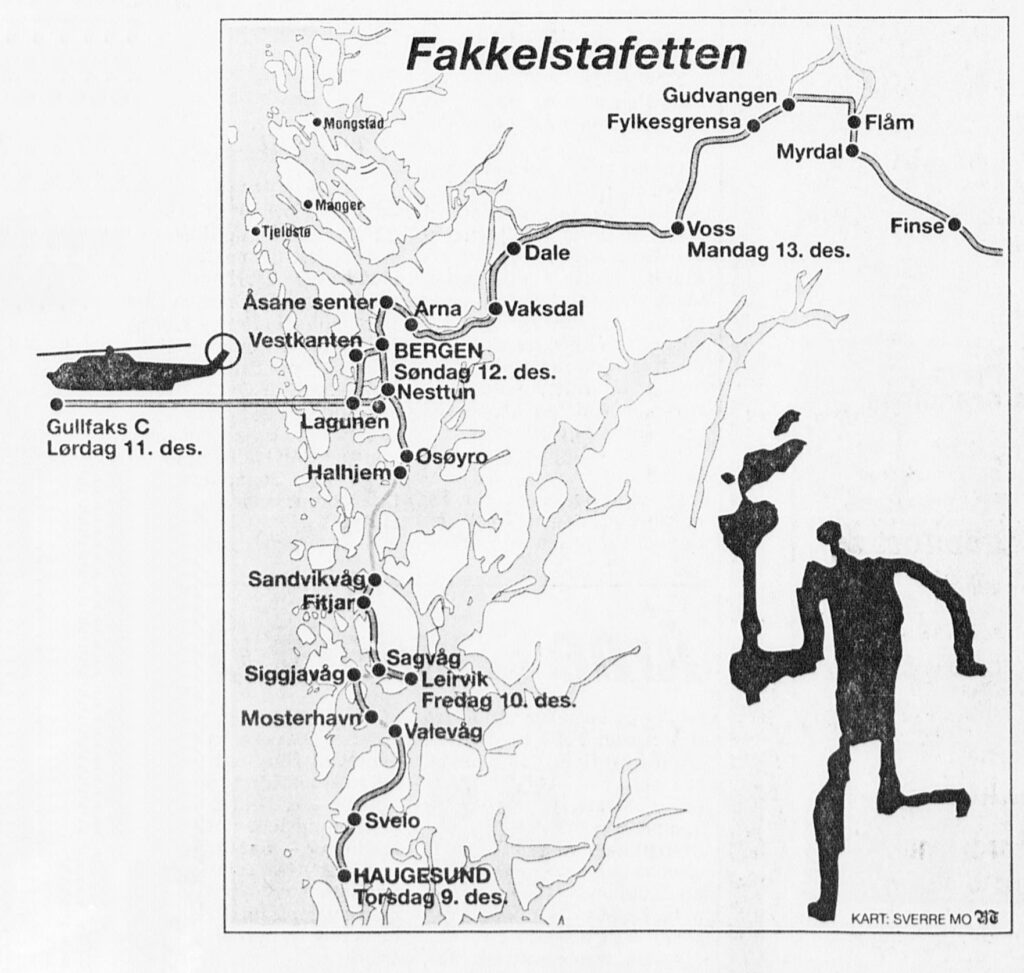Fuelling the Olympic flame

The Olympic torch was ignited on 27 November 1993 at the birthplace in Morgedal of Sondre Norheim – the father of modern skiing.[REMOVE]Fotnote: https://www.teamnor.no/nyheter/2019/the-best-olympic-games-ever/
This was followed by a nationwide relay intended to celebrate and increase awareness of the games. Organised by the Norwegian Post Office, the 75-day run was staged in collaboration with local cultural institutions along its whole route. About 7 000 runners took part, and running a stage was seen as an honour. Popular celebrations were organised in about 500 places before the relay terminated at the Olympics opening ceremony on 12 February 1994.

Statoil’s job was to keep the torch alight by supplying it with gas en route. The company was the official Olympic supplier of petrol and oil products, including propane for heating and operating the tent park during the games. It also made a cash payment of NOK 60 million as a sponsor.[REMOVE]Fotnote: Statoil Magazine, 1993.
Flare to Gullfaks
In order for the flame to reach Gullfaks C, its bearer had to take it by a helicopter. This took off from Bergen on 10 December 1993. Ten people had been selected to take care of this leg, including mechanic Frank Bogen from Moss south of Oslo. He had served on Gullfaks from the start and was responsible for keeping the 320-berth living quarters in tip-top condition.
The threat of fire meant the Olympic flame had to be kept in a specially designed “byre lantern” on its way to the field 175 kilometres west of the Sogne Fjord. This event was well covered by the media, with three helicopters ferrying TV and newspaper reporters out to the platform.[REMOVE]Fotnote: Moss Dagblad, 3 December 1993, “Fakkelbærer på Gullfaks”.
Haldis Myking, the Post Office manager for Hordaland county, lit a miniature version of the Olympic torch from the flame in the lantern. She then ran down nine stories from the helideck to the canteen, where the torch ceremony took place.

Guests included former Olympic medallist Sten Stensen and Gerhard Heiberg, president of the organising committee for the Lillehammer games.
After the ceremony, a show was staged in the platform’s cinema with musician Tor Endresen and trumpet-player Ole Edvard Antonsen as the best-known performers. And during this event and throughout the night until it returned to land the following day, the lantern with the Olympic flame was kept in the office of offshore installation manager Rune Botnevik. It then passed to Bergen, Voss and beyond.[REMOVE]Fotnote: Bergens Arbeiderblad, 11 December 1993, “OL-fakkelen til Gullfaks C”. That was not the only time the flame became airborne. A plane carried it on 31 December 1993 to Svalbard for a big New Year celebration.
The highlight was naturally the arrival of the torch in Lillehammer, with Crown Prince Haakon performing the final lap to ignite the Olympic flame at the stadium where – with gas from Statoil – it burnt for the 16 days the games lasted.

